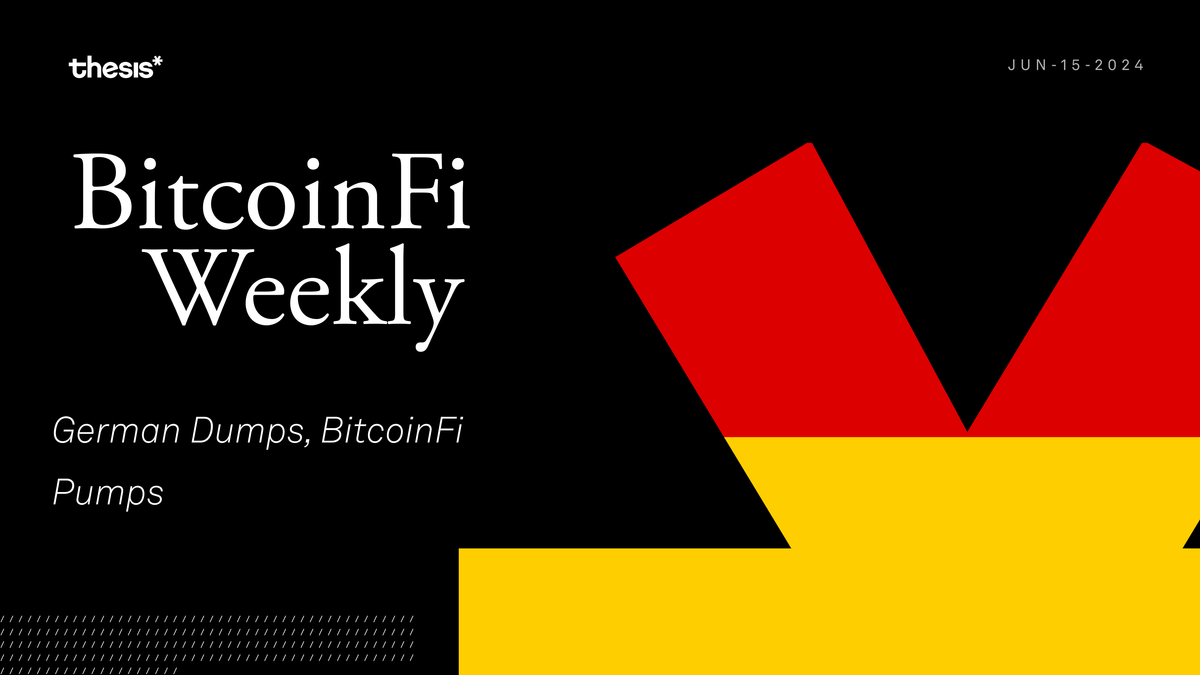Welcome to BitcoinFi Weekly. We cover where people use their BTC and what is changing in the Bitcoin world.
So, last week we learned that BitcoinFi is a thing, and not just another crypto buzzword invented by some sleep-deprived marketing fella after too many Red Bulls. Sure, Bitcoin as digital gold, a hedge against inflation, blah blah blah—that’s all great. But if that’s where the story ends, we’re selling Bitcoin short. BitcoinFi transforms Bitcoin from a hoarded asset into a vibrant part of the financial ecosystem. We want Bitcoin to do more than just sit in a wallet hoping for a price surge.
But with every new landscape, comes the risk of the unknown. Will tokenizing Bitcoin, slapping some yield on it, and calling it novel actually push BitcoinFi further? Or is it just teaching an old dog new tricks? Either way, it's certainly more entertaining than watching another Bitcoin maximalist explain why this year is definitely, absolutely, pinky-promise the year of mass adoption.
Here’s this week’s rundown:
🎀 Wrapped BTCs hitting ATHs on L2s
🆕 A new Bitcoin-backed stablecoin
💦 CoreDAO wets their BitcoinFi beak
🇩🇪 German state of Saxony cosplays as a crypto whale, dumping 50,000 BTC faster than you can say "regulatory panic."
Updates in BitcoinFi
Strong demand for moving BTC on EVM chains
wBTC and tBTC have recently seen their daily transfers hit ATHs. Both forms of BTC are seeing sustained daily transfers, up significantly from the 2021 bull market.
The interesting part is that most of the transfers are happening on L2s — Polygon and Arbitrum for wBTC and Base for tBTC.On Ethereum, wBTC holders mostly use their assets as collateral or for longer-term passive yield via liquidity provided on dexes.
Bima Labs Joins the BitcoinFi Landscape
Emerging from stealth, Bima Labs announces USDB, a Bitcoin-backed stablecoin Bima Labs adapts MakerDAO's model to the Bitcoin ecosystem, allowing users to mint USBD stablecoins using Bitcoin liquid staking tokens (Babylon-staked Bitcoin) as collateral. The protocol incentivizes USBD circulation on platforms like Curve and Convex Finance by providing a share of trading fees, CRV, CVX, and BIMA.Holders of Babylon-staked Bitcoin are uniquely positioned to benefit from USBD, as it specifically caters to their desire for capital efficiency. By using Babylon-staked Bitcoin as collateral, these holders can unlock additional utility without sacrificing their Bitcoin exposure. This opens various avenues of maneuverability within the BitcoinFi ecosystem, including leveraging assets for yield farming, providing liquidity across various protocols, and exploring various sophisticated trading strategies.
Ignition Debuts $FBTC
A new yield-bearing bitcoin wrapper has entered the market. $FBTC is pegged 1:1 to BTC, making Bitcoin more versatile and efficient. This allows you to participate in various DeFi activities across multiple networks.
CoreDAO 🤝 BitcoinFi
CoreDAO is wetting its BitcoinFi beak by introducing Dorian, a non-custodial Bitcoin staking money market. It's bringing practical DeFi tools to Bitcoin users by offering yields on coreBTC, CORE, USDT, USDC, WETH.
Dorian has positioned itself as a “yield-first” protocol prioritizing user rewards (native points system) and a fee-sharing model for token stakers. What’s particularly interesting is that, unlike many DeFi protocols, Dorian operates without a governance structure 🤔. Will this help reduce complexities and streamline processes? At what cost? Seeing how Dorian fares on the path less taken will be fascinating. As a native money market on Core, Dorian will make a bold addition to the BitcoinFi landscape.
German Govt.
This week, there was some wild price action, and many were pointing fingers at the German government, but in fact, it was a small German state called Saxony. Earlier this year, the Saxon State Criminal Police Office confiscated nearly 50,000 BTC during a criminal investigation. Now, the state has been steadily liquidating its entire Bitcoin holdings over the course of roughly eight days. This dramatic sell-off sent ripples through the markets.
source: Arkham IntelligenceThe selling started in the early hours of July 4th, when wallets associated with the German state began transferring 1300 BTC (worth approximately $76 million at the time) to various exchanges (Kraken, Bitstamp, and Coinbase), with an additional 1700 BTC ($99 million) transferred to OTC services.
As the week progressed, the volume and frequency of these transfers intensified. July 8th marked a turning point, with the German state moving over 16,000 BTC in a single day. This massive sell-off coincided with a dip in Bitcoin's price, which fell to $55,000 amid the increased selling pressure.
The pattern continued throughout the week, and while some Bitcoin was periodically returned to the government's wallets, the overall trend was a steady decrease in their holdings.By July 11th, the German’s Bitcoin reserves had dwindled to less than 5,000 BTC, a jaw-dropping fall from the 40,359 BTC they held at the beginning of the month. The final act came on July 12th, when the remaining 3,846.05 BTC were transferred out.
Meanwhile, on July 8th, United States-based spot Bitcoin ETFs experienced their biggest day of net inflows in over a month, raking in a total of $295 million. BlackRock stays buying and leads the way.
US Govt. Sittin’ Pretty
No noise from US-labeled wallets amid the German selling spree.
Closing Remarks
So there you have it — BitcoinFi is here, is not just another buzzword and is upending the status quo. The juxtaposition of centralized institutions' views of Bitcoin, their actions wrought with pervasiveness and fear, compared to the jittery fever of BitcoinFi development, reminds us of the early days of DeFi...goosebumps, to say the least.
Thank you for tuning in to this week’s BitcoinFi Weekly. See you next week.
Anything you want us to cover? Reach out at [email protected]

